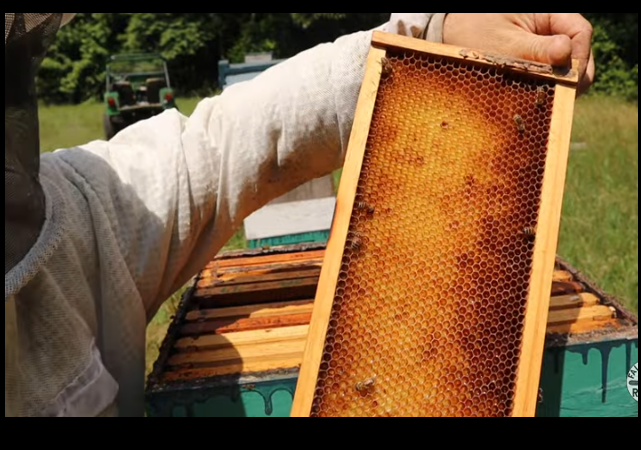Professional Beekeepers Warn That Policies Based on ‘Colony Collapse’ Mania are Hurting Biodiversity

The last time we checked on bees, a California court ruled that bees could be classified in a category initially intended for use for fish and aquatic life in an endangered species law.
However, beekeepers are warning that the threat of bee extinction has been wildly overstated. Eco-activists trying to fix a non-existent problem have hurt the environment.
When I toured Ljubljana, Slovenia, in 2022, I noticed the place was essentially run by “flower children.” The New York Times published a review of the realities experienced by a professional beekeeper in that city who tends hives competing with those of “bee saviors” who believed the hype about the drop in bee populations.
…Gorazd Trusnovec, a 50-year-old with a graying goatee who is the founder and sole employee of an enterprise called Najemi Panj, which translates to “rent-a-hive.” For a yearly fee, he will install a honey bee colony on the roof of an office, or in a backyard, and ensure that its bees are healthy and productive. Customers get the honey and the pleasure of doing something that benefits bees and nourishes the environment.That, at any rate, was Mr. Trusnovec’s original sales pitch. In recent years, he and other beekeepers, as well as a broad variety of leading conservationists, have come to a very different conclusion: The craze for honey bees now presents a genuine ecological challenge. Not just in Slovenia, but around the world.“If you overcrowd any space with honey bees, there is a competition for natural resources, and since bees have the largest numbers, they push out other pollinators, which actually harms biodiversity,” he said, after a recent visit to the B&B bees. “I would say that the best thing you could do for honey bees right now is not take up beekeeping.”
The panic began in 2006, with a phenomenon that was described as “colony collapse disorder.”
Since 2006, the bee labs at the Alabama-based University of Auburn and the University of Maryland have tracked rates of “colony collapse disorder,” or when a hive fails entirely.That timing was no accident: The disorder first appeared in 2006, when a rash of beekeepers began to describe a surreal occurrence in which adult worker bees deserted a hive, leaving the queen and her larvae behind.
But it turns out it is capitalism for the win regarding a solution to the supposed “bee crisis.”
Honey bees, it turns out, are a commercially managed animal — essentially livestock, like cows — and large beekeeping operations are remarkably adept at replacing colonies that die. In the United States, about one million hives are trucked each year to places like California, where honey bees pollinate almonds and other crops, Mr. Black said. It’s a major industry.While techniques for nurturing hives have improved, honey bees remain vulnerable animals. As of a few years ago, nearly 30 percent of commercial honey bees still did not survive the winter months, says the Environmental Protection Agency. That’s a large number and one that puts a financial strain on commercial beekeepers.“But that’s an agriculture story, not a conservation story,” Mr. Black said. “There are now more honey bees on the planet than there have ever been in human history.”
Unfortunately for Europeans, the bee mania still has significant regulatory consequences. Europe’s sugar beet growers are being forced to turn away from the crop in a move that could drive soaring prices even higher because of mandates related to insecticides they can use.
Farmers are switching crops after the European Union’s top court ruled in January they can no longer be granted exemptions to a ban on so-called neonics – insecticides which protect against diseases like virus yellows in sugar beet but are toxic to bees and other pollinators vital to food production.The ruling, which the bloc and environmental groups say is critical for safeguarding pollinators, some of which are currently threatened with extinction, has led to a cut in acreage devoted to sugar beet as crop yields suffer, farmers and industry experts told Reuters.”In our region, we lost 15% of the (sugar beet) area (this year),” said Alexandre Pele, who has a 240 hectare farm in central France.”I have struggled to meet volume commitments with the sugar factory because my yields have declined notably due to the ban on neonicotinoids,” said Pele.
In conclusion, the data shows another case where using “scientific consensus” for political purposes has collapsed in the face of reality.
As I touched upon wines yesterday, I want to conclude with a note about one of my favorite drinks.
CLICK HERE FOR FULL VERSION OF THIS STORY